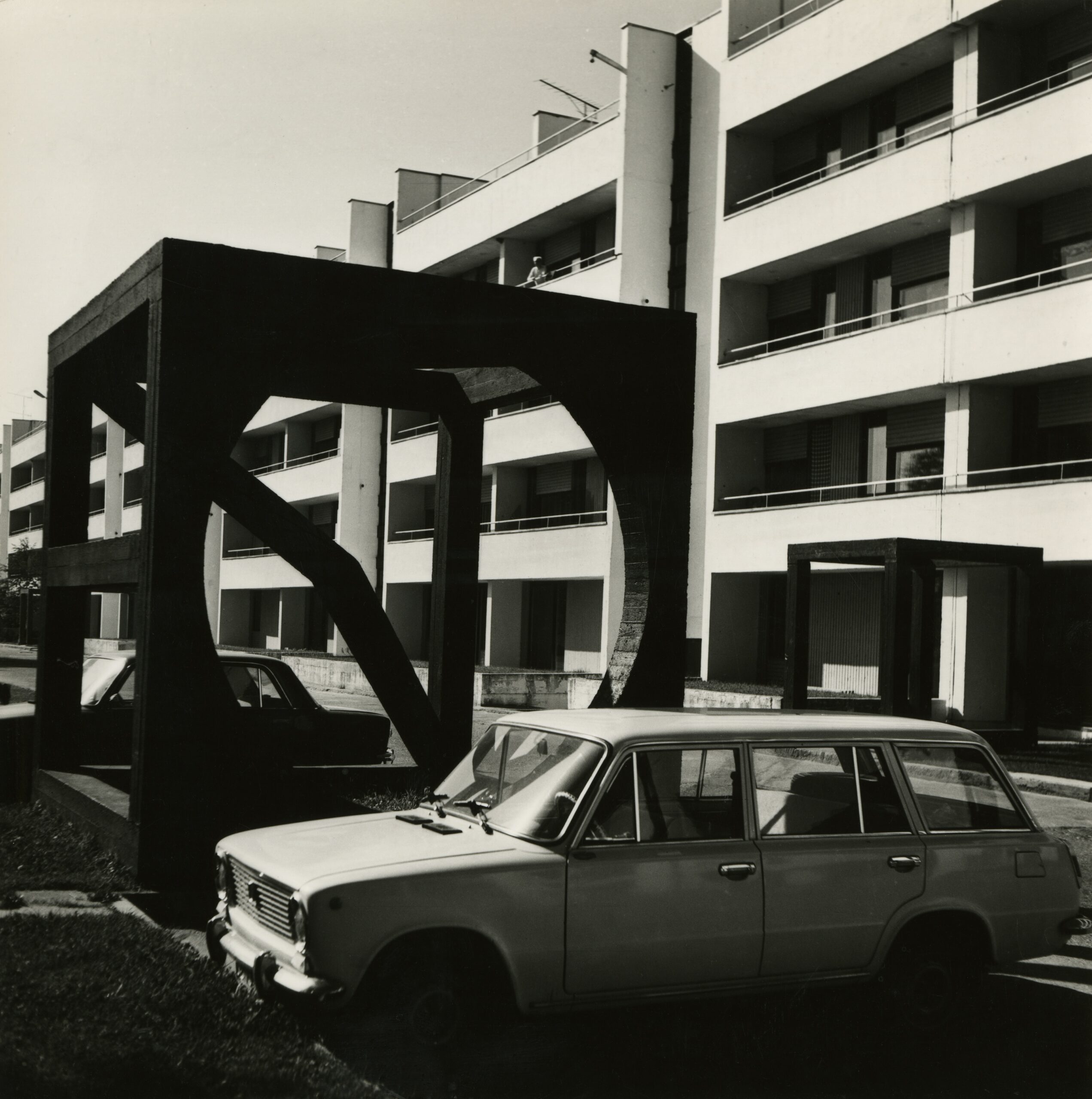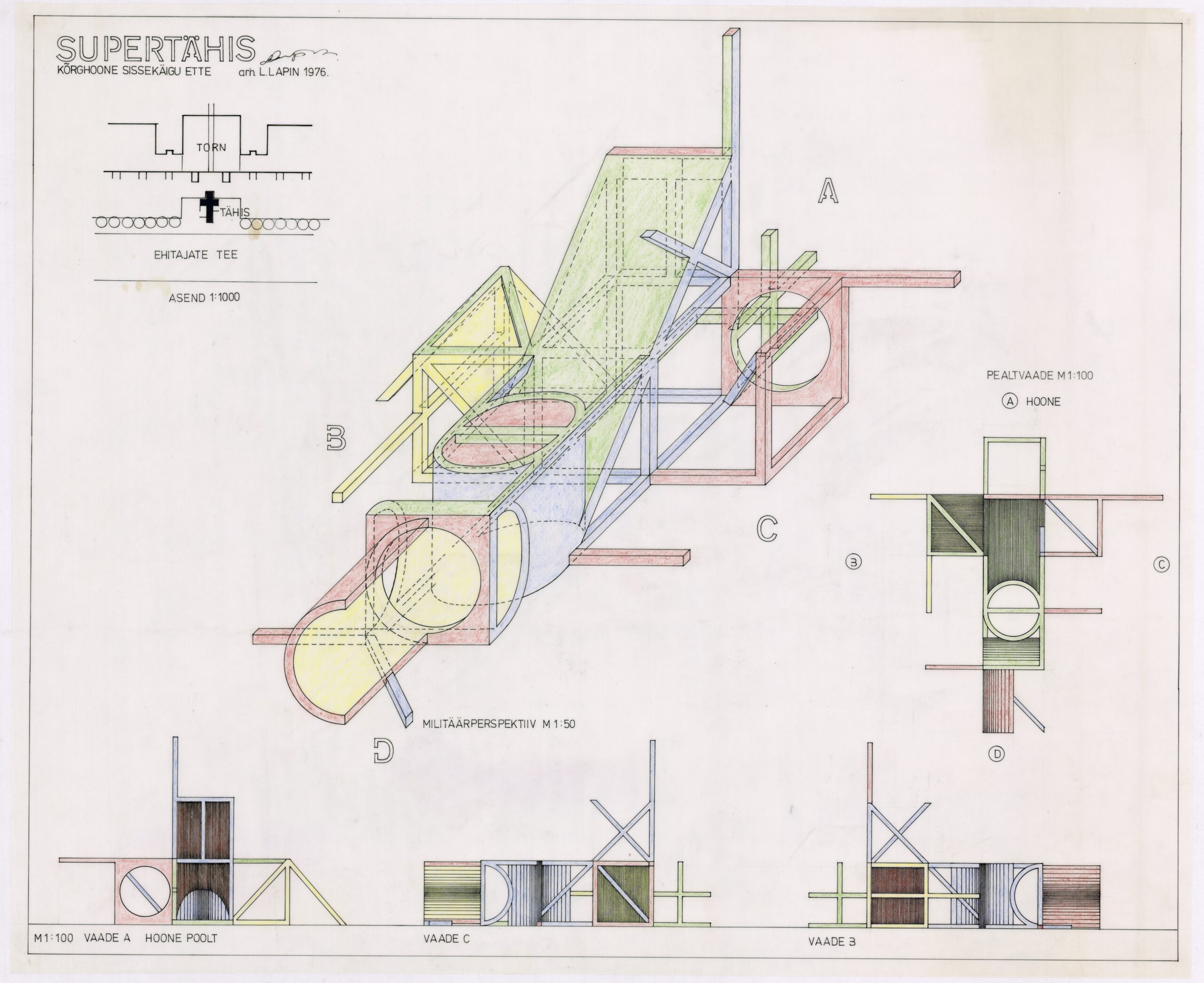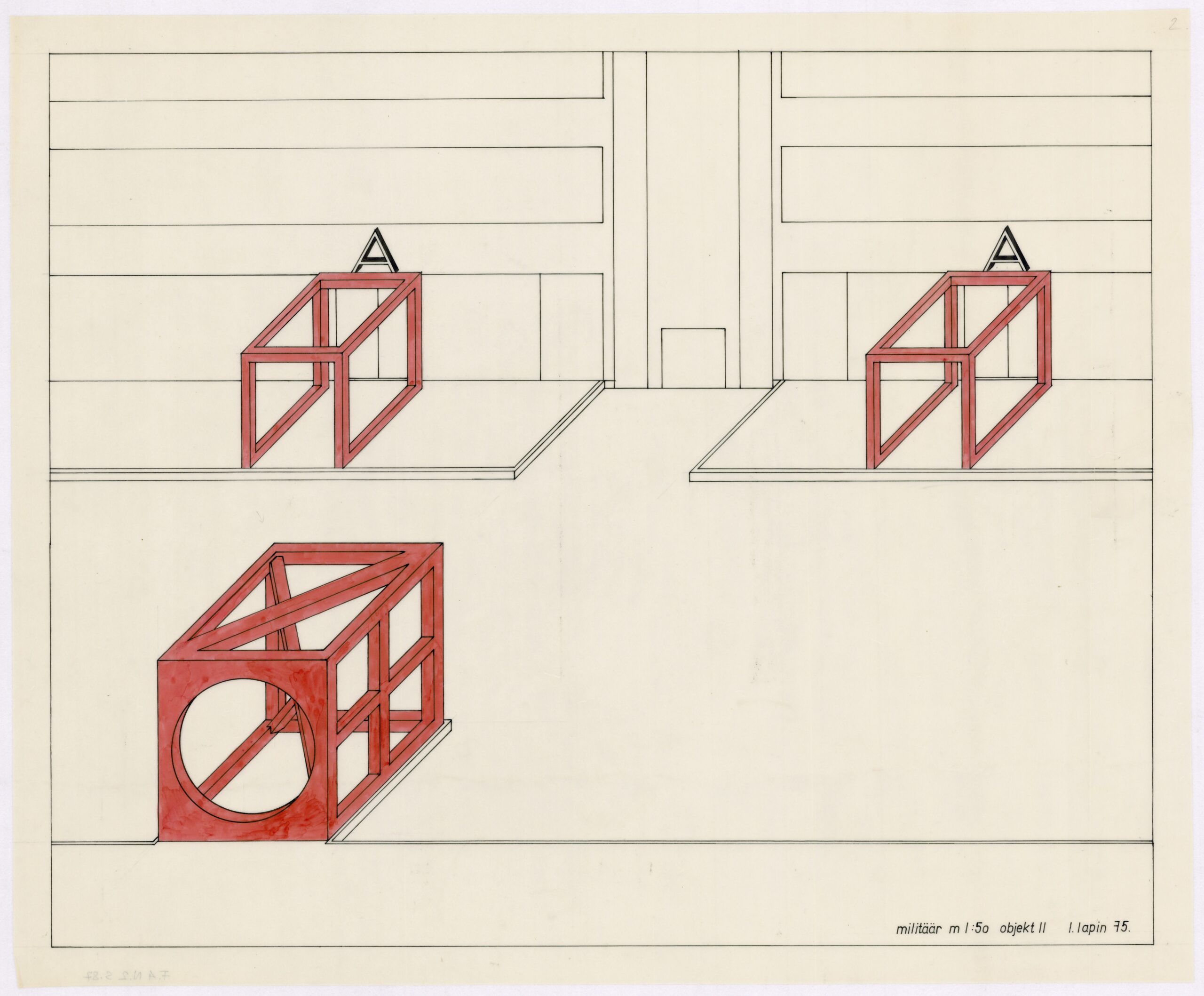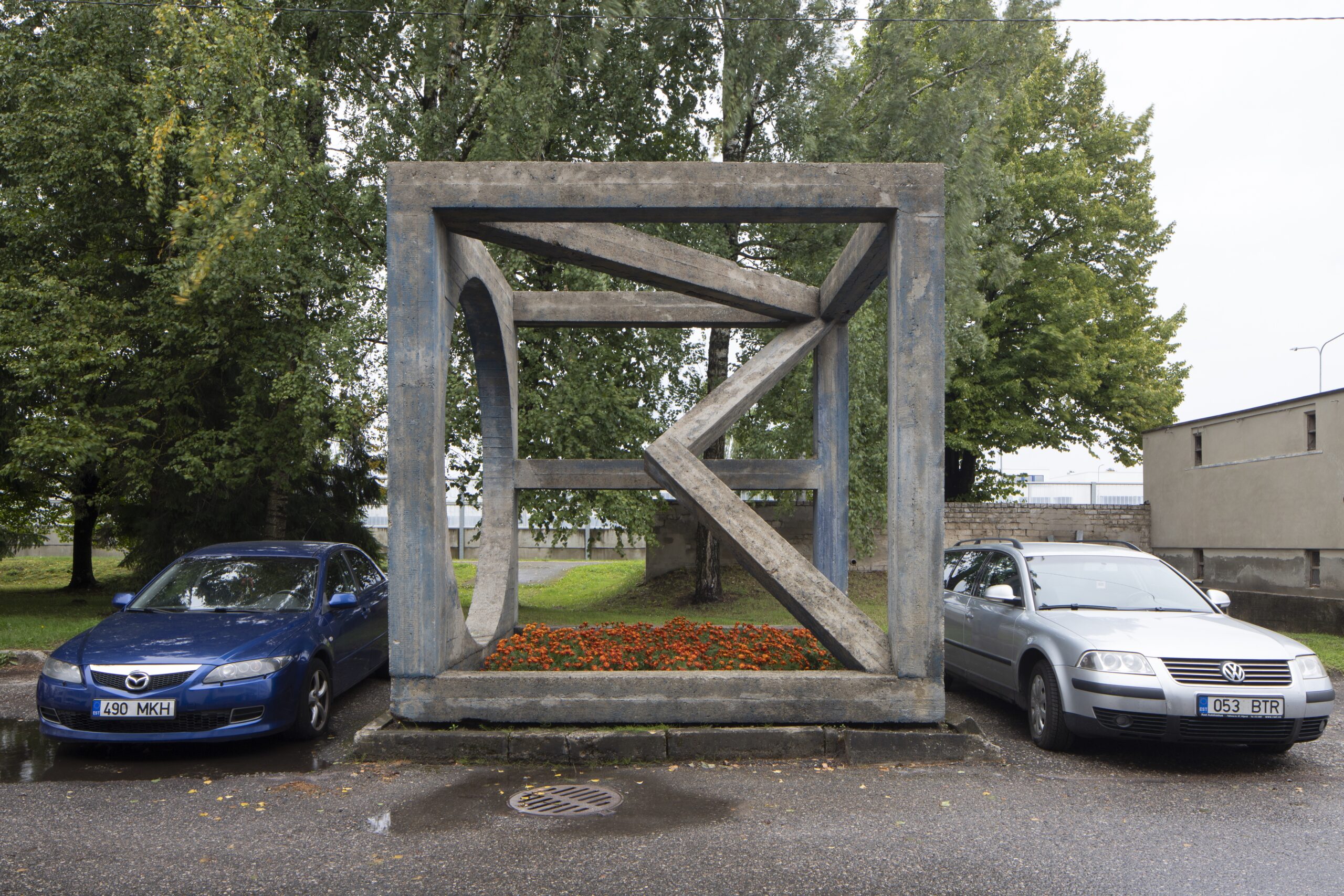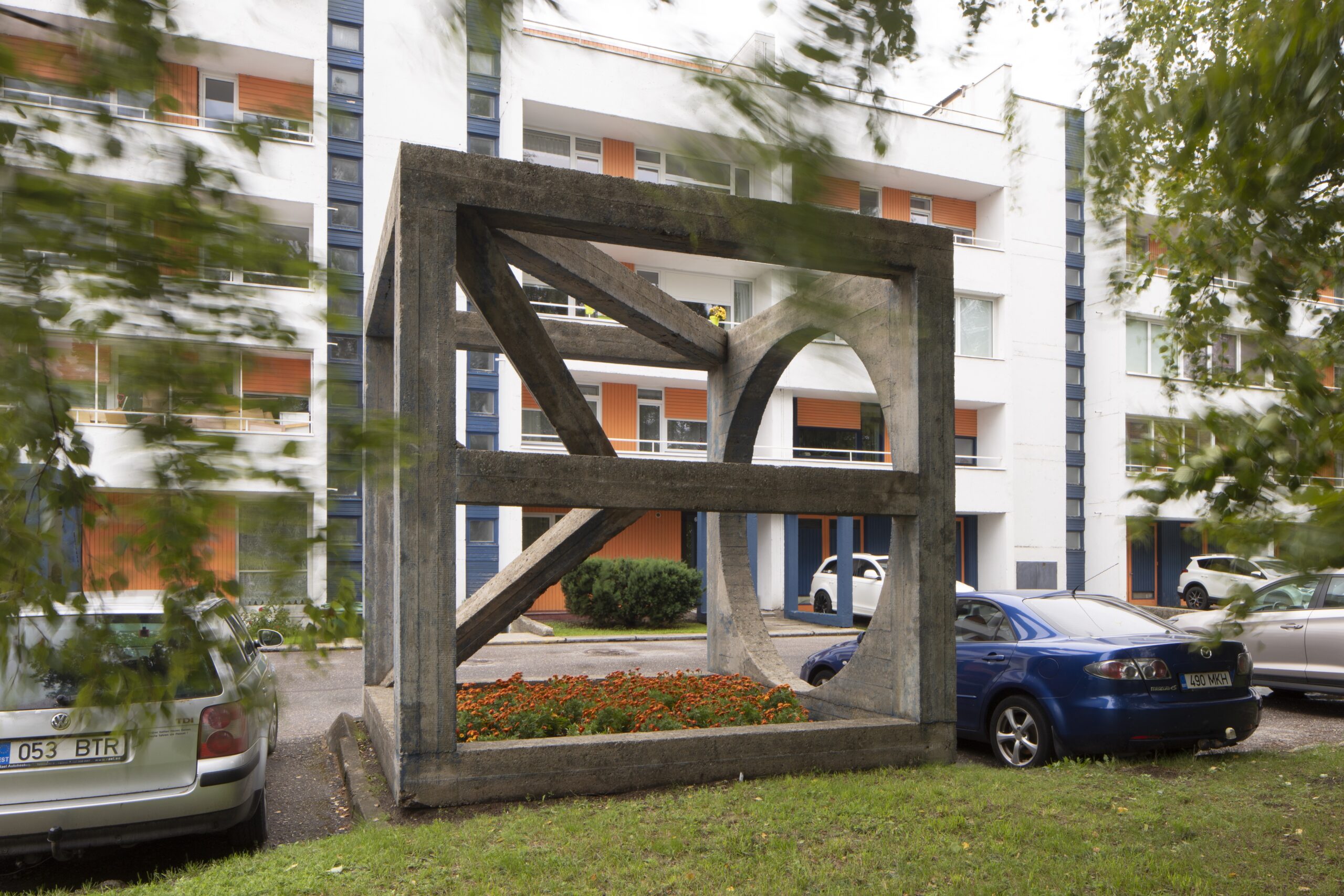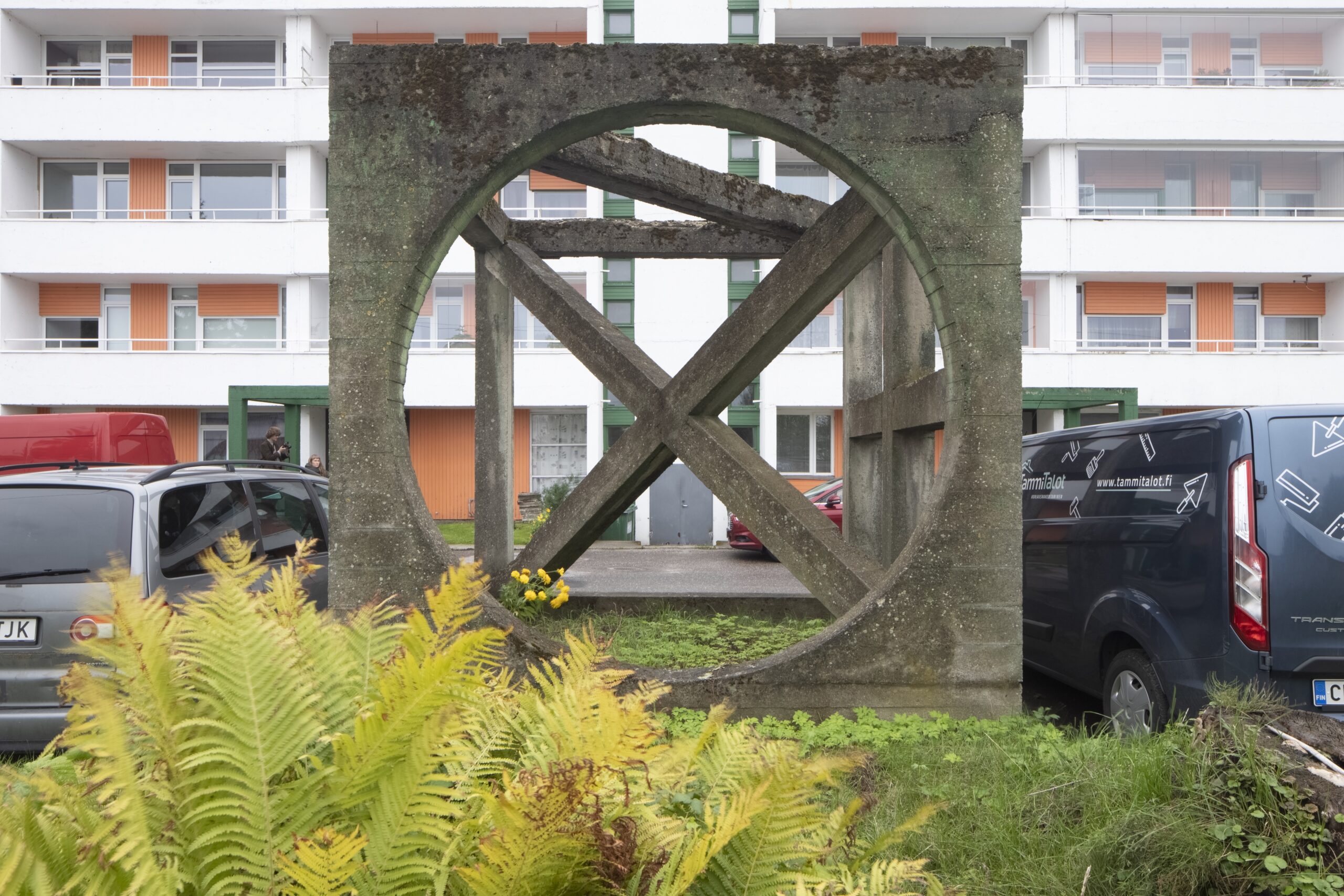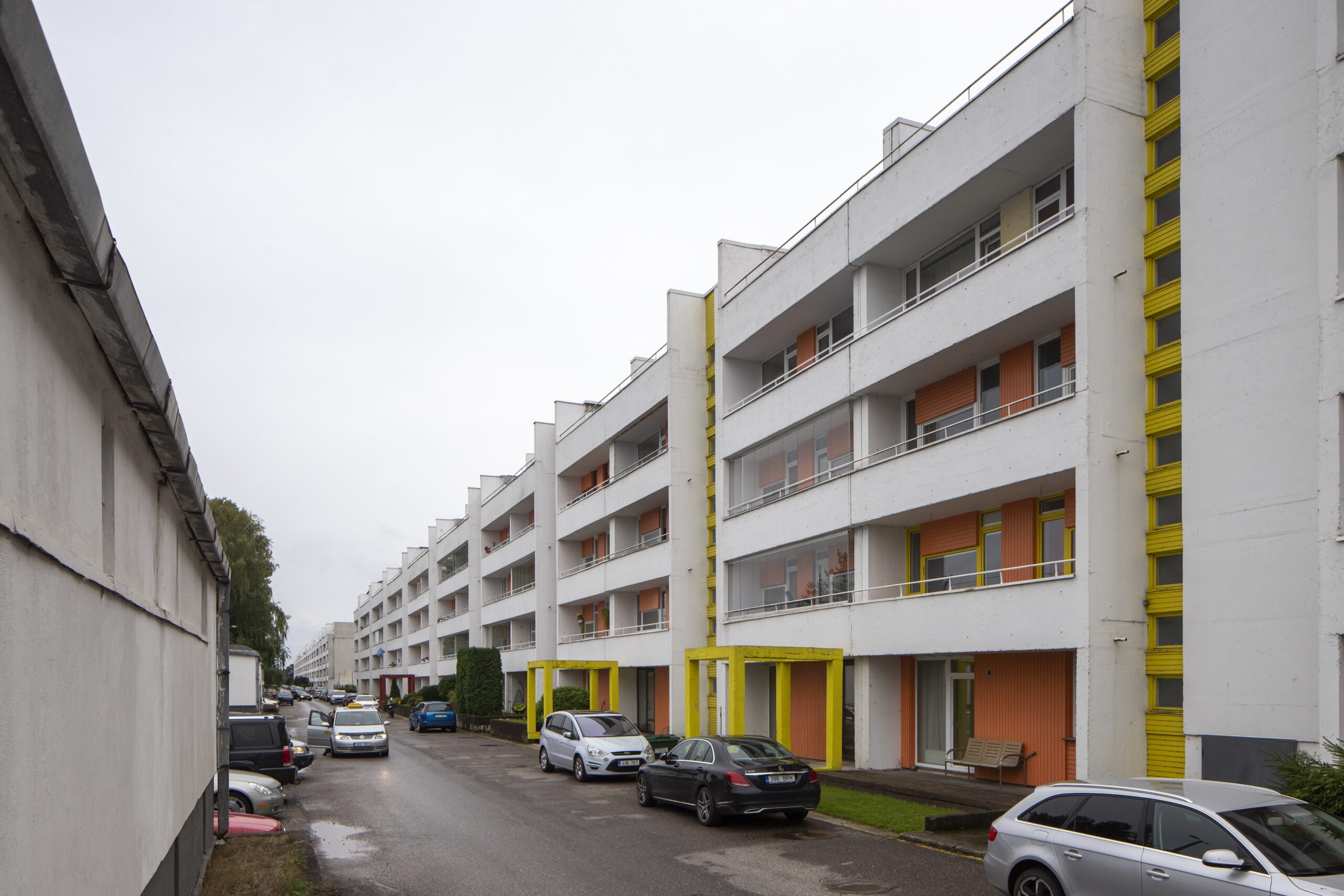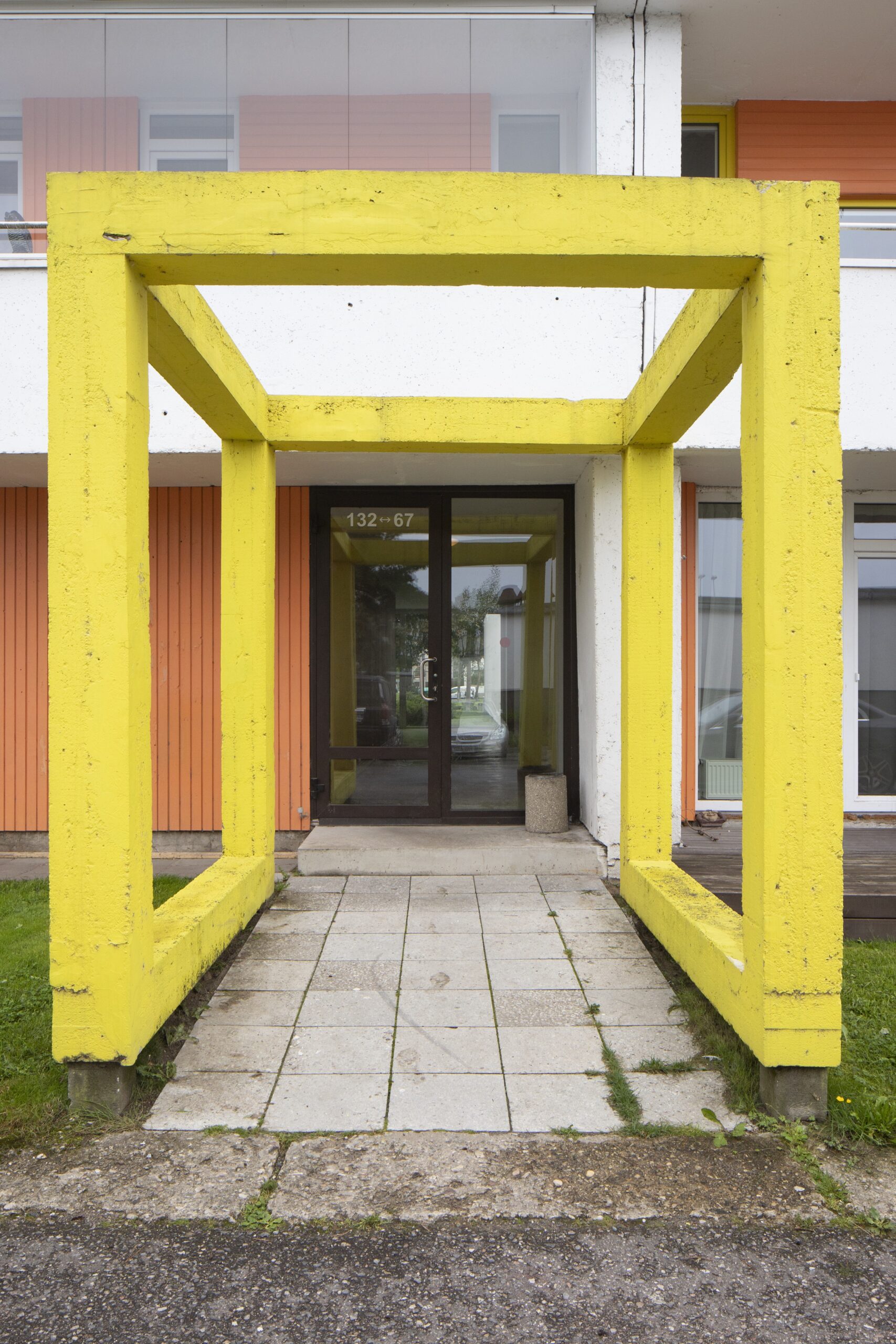Architectonic Structures of the Kuldne kodu (“Golden Home”) Residential Building
Years of completion: 1975–1978
Address: Pärnu County, Pärnu, Kuldse Kodu
Author Leonhard Lapin
Reinforced concrete
Not under conservation as a cultural monument
In the Soviet regime, a person was a unit that had to devote themselves to serving the supreme benefit of society as a member of it. Such seminal conditions enkindled a protest in the restless Estonian art students that erupted in the form of different creative strategies from architecture to Happening.
The agenda of the younger generation of the time, among whom Leonhard Lapin belonged, was to create a living environment targeted at man, which sees the city through the practice of living, as an equal subject to architecture, with the power to actively participate in the lives of the people inhabiting it. The architectonic structures constructed in front of Kuldne Kodu (Golden Home) by Pärnu KEK (Collective Farm Construction Office) are based on this very endeavour to create a living environment after the face of man that favours the sense of consciousness and a rediscovered sensitivity. And so, they are not lacking in socially critical moment or deeper introspection regarding composition questions.
Architectonic structure as a term stands between sculpture and architecture; it is architecture without a function, it does not serve any purpose but to express dimensional correlations, and at the same time it is a sculpture that is emphatically based on structural principles. Therefore, in a functional sense,an architectonic structure is somewhat reversed, even absurd, but reveals the geometric correlations and the pure inner relations of a three-dimensional structure in the clearest way despite that. Based on such contradiction, in Estonian context an architectonic structure could even be named absurditecture, where the immeasurable, perhaps even religious emotional depth of Suprematism, and the farcical Happening are embraced in the form of sculpture.
Enriko Mäsak







